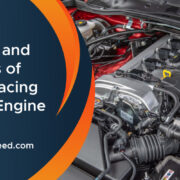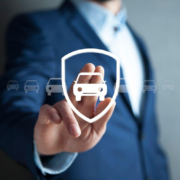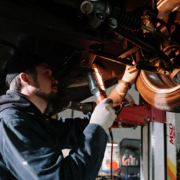With the rise of electric vehicles, there has been an evolution in mindsets driven by concerns over climate change, energy efficiency, and technological advancements. EVs offer numerous benefits, including reduced greenhouse gas emissions, lower operating costs, and smoother, quieter rides.
As electric vehicles (EVs) surge in popularity, the automotive repair industry faces a profound evolution in its practices.
Unlike traditional engines, EVs rely on intricate electrical and electronic components, necessitating specialized repair expertise and techniques. From routine maintenance to collision repairs, understanding the complexities of EVs is crucial for ensuring safety, efficiency, and customer satisfaction.
Continue reading this article to learn about the world of EV repairs, fulfilling its unique demands, challenges, and innovations that characterize this dynamic field.
Table of Contents
Understanding EV Repairs
Modern EV body shops and bodywork specialties undertake a transformative journey to meet the unique demands of these vehicles.
EV repairs involve understanding the intricacies of unique electrical circuitry, components, and systems. This includes familiarity with high-voltage systems, battery technology, and lightweight materials like aluminum and carbon fibers. A technician must be skilled in diagnosing and addressing electric propulsion issues and proficient in specialized care techniques for EV components.
Similarly, as electric vehicles are powered by their batteries, they require specialist attention to avoid short circuits and fire risks. Repair shops need access to manufacturer-approved tools, diagnostic equipment, and training to assess battery health accurately and perform repairs effectively.
Challenges in EV Bodywork
EVs often employ lightweight materials such as aluminum and carbon fiber to enhance efficiency and performance. Repairing these materials demands specialized skills, equipment, and techniques to maintain structural integrity and safety standards.
Technicians must possess adequate knowledge about properties like material strength, flexibility, and damage susceptibility. It is also challenging to acquire dedicated welders, riveters, and adhesive bonding systems designed to maintain the structural integrity of aluminum and carbon fiber repairs.
Additionally, aluminum welding requires innovative techniques such as gas metal arc welding (GMAW) or tungsten inert gas (TIG) welding, which need precise control of heat and filler materials to prevent distortion or weakening of the material.
Carbon fiber repairs, on the other hand, often involve composite patching, resin infusion, or vacuum bagging techniques to restore structural integrity while minimizing weight and maintaining aerodynamic efficiency. Sourcing these OEM-approved repair materials is a further challenge and can significantly impact repair costs for EV owners.
EVs often incorporate aerodynamic designs and streamlined shapes to optimize efficiency and range. Repairing damage to these components, such as bumpers, spoilers, and underbody panels, requires precision and attention to detail to preserve the vehicle’s aerodynamic profile.
The growing connectivity of electric vehicles has given way to cybersecurity concerns in repair practices. EVs are vulnerable to cyber-attacks because they rely on interconnected systems and many electronic control units (ECUs) to function. Technicians must have the knowledge and tools to safeguard EVs against potential security breaches, including unauthorized access, data theft, and remote manipulation.
Adapting to Technological Advancements
As EV technology continues to evolve, repair shops must grow to lead the industry and meet the changing needs of EV owners.
One such revolutionary advancement is integrating artificial intelligence and machine learning in repair diagnostics for electric vehicles. AI algorithms can analyze massive sets of sensor data to detect anomalies and patterns, aiding technicians in proactively diagnosing potential issues and employing predictive maintenance scheduling.
Augmented reality (AR) is another valuable tool in EV repair, offering remote assistance and training capabilities. You can overlay digital information into physical components to get a step-by-step repair procedure guideline.
Additionally, AR allows technicians to collaborate remotely with other experts, facilitating real-time troubleshooting and knowledge sharing. This ensures enhanced efficiency, reduced downtime, and consistent repair quality across geographically dispersed repair centers.
You can incorporate predictive maintenance systems in your setup to leverage data analytics to forecast potential equipment failures before they occur. This proactive approach minimizes unexpected downtime, extends vehicle lifespan, and optimizes maintenance schedules to maximize operational efficiency.
Endnote
Electric vehicles represent the future of transportation, offering sustainable, efficient alternatives to traditional ICE vehicles. Given the dynamic nature of EV technology, there is an urgent need for service practices that can adapt to evolving vehicle architectures and components.
Efficient repair practices play a pivotal role in the sustainability and performance of electric cars. Flexibility, innovation, and a proactive mindset are the key components to building a repair practice that can keep pace with the ever-changing EV landscape and contribute to the transition to a greener, more sustainable future.








Comments